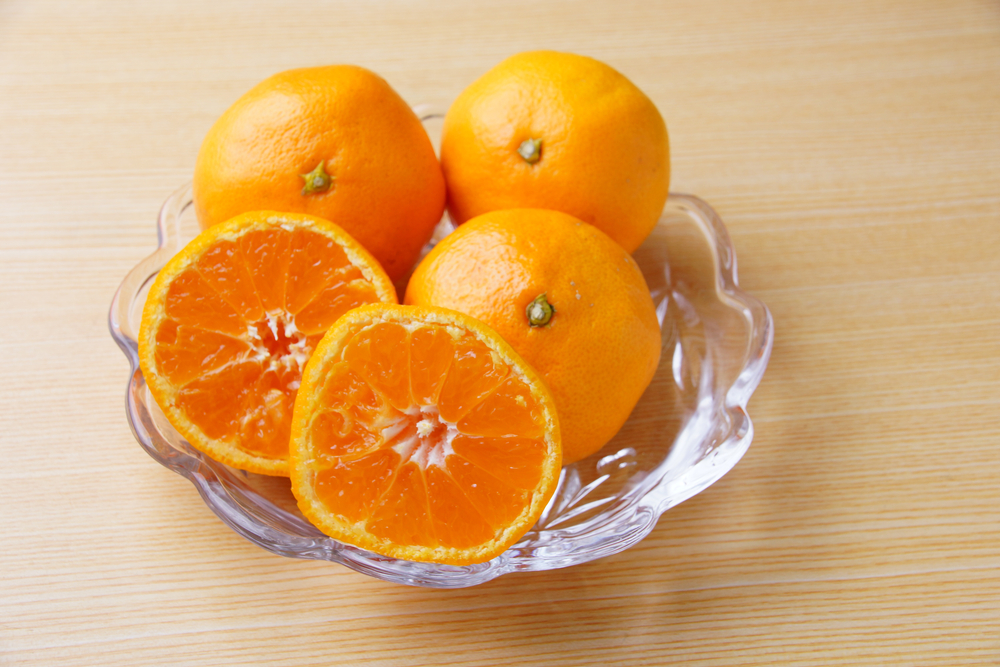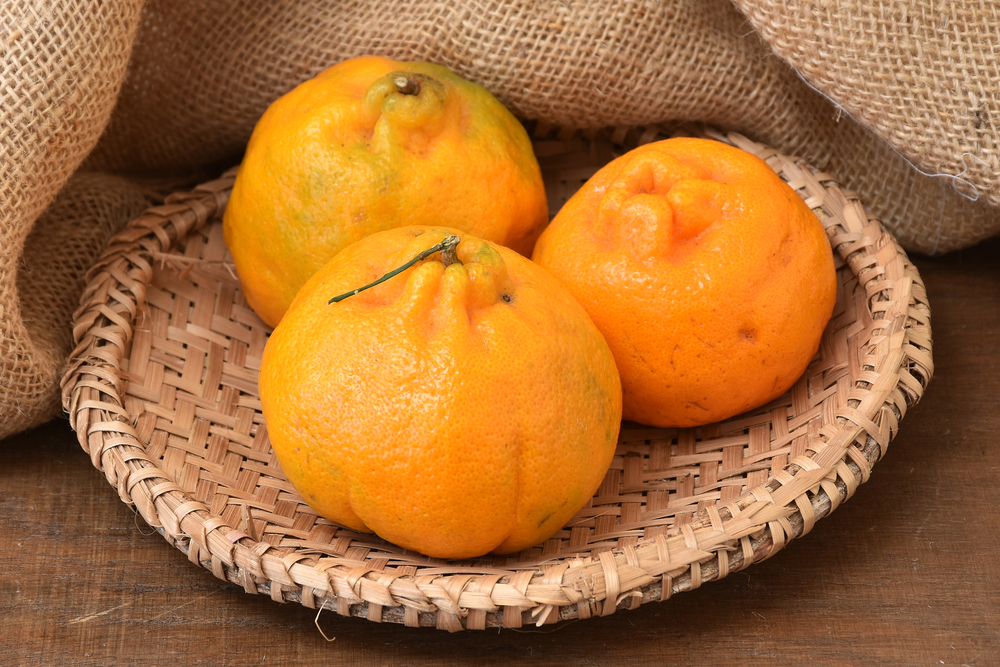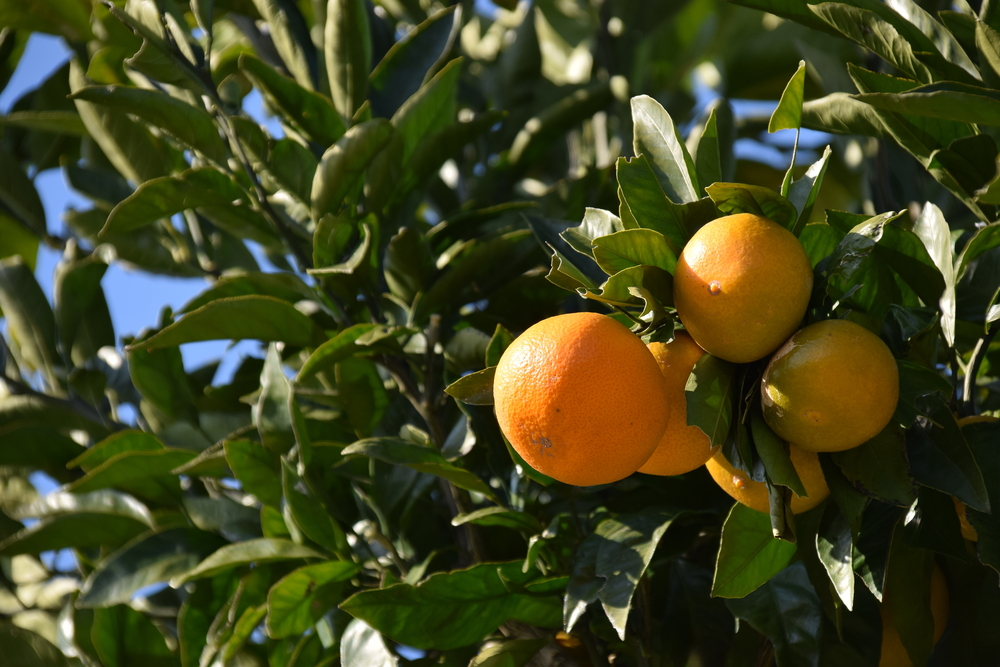The mikan, Japan’s quintessential winter fruit, which can be found on the coziest kotatsu and festive New Years’ spread, has had a long journey to the contemporary table. From Chinese trade and Western imperialism to domestic consumption and creative cultivation, the mikan is a snapshot into the heart of Japan’s dynamic history and economy. Let’s take a closer look at the short history of how the mikan and the Kyushu region have long been intertwined and to whet your palate with some regional specialties.

While mikan have now become ubiquitous when you think of Japanese fruit, in fact, their origins are decidedly international. The word “mikan” is generally understood in Japanese as a small, sweet, easily peelable form of citrus which has ascended to the status of national symbol. Yet, the botanical name for mikan in Japanese, unshu mikan, derived from Classical Chinese and meaning “honey citrus of Wenzhou”, demonstrates the transnational history that brought us this sweet and sour treat. If you ever wondered why other small citrus in English are sometimes referred to by the “mandarin orange” moniker, you can thank early international travelers, the Jesuits, for introducing the Chinese citrus to parts of the western world.
In Japan, the history of the fruit begins much longer ago, about 1,200 years ago to be exact. Based on writings in the Kojiki, or “Records of Ancient Matters”, one of the oldest chronicles of Japanese history and legends compiled for the Yamato imperial court in the 7th and 8th centuries, it is thought that the first mikan seeds were brought from China. Their given name referred of course to Wenzhou, the famous citrus-producing region in China. Although the original failure rate for the crop was high, it is thought that they were first successfully cultivated in present-day Yatsushiro City in western Kumamoto Prefecture making them a true Kyushu specialty item. In the 1570s, a smaller seedless version of the fruit was found in the same region and is considered the starter seed for the way the beloved mikan looks and tastes today. Because, while Japan is known for its various varieties of mikan, they are all botanically from the same species: the unshu mikan from long ago.

Why is Kyushu so strongly associated with mikan? In present times, the top mikan producers are not in Kyushu anymore, but in Wakayama, Ehime, and Shizuoka prefectures. But, the roots of history are deep starting with the first seeds. Indeed, some of the oldest mikan trees are still producing fruit in Kagoshima while Oita boasts trees thought to be around 860 years old. Also, Western imperialism and trade have tied the sweet fruit to Southwestern Japan from the very beginning. In 1878, the wife of General Van Valkenburgh, the then-American Minister to Japan, imported mikan from Kagoshima, whose western part was called Satsuma at that time, to the United States. Named after the region they came from, “satsumas” as mikan came to be called stateside, quickly took off in popularity. Between 1908 and 1911, a million mikan trees were imported to the lower gulf states and the original imported type, owari, is still grown in Florida.
Tasting Kyushu Mikan
So, are you ready to try some of Kyushu’s historic oranges? Read on for some delicious recommendations.
Dekopon (デコポン)
View this post on Instagram
First developed in Nagasaki Prefecture in the 1970s but rejected due to its unusual characteristic raised top, the Dekopon took off from Kumamoto Prefecture where it was easier to cultivate. What resulted was a Kumamoto specialty that is remarkably sweet with little acidity and fragrant juiciness.
Green House (グリーンハウスみかん)
View this post on Instagram
Part of the “House” mikan family, grown indoors, which were developed in Saga prefecture in the 1970s, Green House mikan are ready to eat between July and September instead of the usual New Years’ holiday period. Known for their distinctive green peel, they are very juicy with a good balance of sweetness and acidity.
Goku Wase (極早生みかん)
View this post on Instagram
Another special green mikan, this Kagoshima specialty is a must-eat for lovers of mikan’s characteristic sweet and sour taste. Available from the end of September to the middle of November, these are the top brand sellers from Kagoshima whose luscious climate retains the summer-like heat in this season as well.
Harumi (はるみ)
View this post on Instagram
Known for its especially sweet juice and easy-to-peel skin, Oita prefecture’s Harumi is a hit with everyone, from children to adults. Available from early January to the end of March, this fleshy fruit with low acidity is incredibly tender but holds its shape well, making it a favorite topper on cakes and tarts.
Hakata Mild (博多マイルド)
View this post on Instagram
Fukuoka prefecture’s mikan are known for their sweetness brought about using an innovative farming technique that shields plants from the rain and dries their soil in order to elevate their sugar content. The Hakata Mild brand boasts this incredible sweet taste while still retaining the juiciness that mikan are appreciated for. Sample these specialties from the end of October to the New Year.
Buying Kyushu Mikan When in Tokyo
As for buying Kyushu mikan online, the following sites offer deliveries of various types of mikan (and other food) across the country.
- Tsukiji Ichiba
- Aoki Fruits Online (for more luxurious options)
- Tabechoku, which allows you to order directly from mikan farmers
Depending on the seasons, of course, the offerings differ so while there are lots of dekopon at the moment, there are none of the Green House or Goku Wase mikan until the next harvest.
See more foodie content here:








